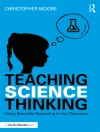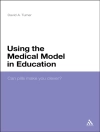Introduction to Criminology: Why Do They Do It? offers a contemporary and integrated discussion of key criminological theories to help students understand crime in the 21st century. Focusing on why offenders commit crimes, authors Pamela J. Schram, Joseph A. Schwartz, and Stephen G. Tibbetts apply established theories to real-life examples to explain criminal behavior. Coverage of violent and property crimes is included throughout theory chapters so that students can clearly understand the application of theory to criminal behavior. Updates to the Fourth Edition include recent major social events, such as the George Floyd protests; changes in crime trends and criminal behavior as a result of the COVID-19 pandemic; updated crime statistics, case studies, as well as contemporary topics, such as mass shooting events and the legalization of marijuana use.
İçerik tablosu
Chapter 1: Introduction to Criminology
What Is a Crime?
What Are Criminology and Criminal Justice?
The Consensus and Conflict Perspectives of Crime
The Criminal Justice System
Criminological Theory
Victimology
Chapter 2: Measuring Crime
Data From Law Enforcement Agencies
Data From Victims of Crime: The National Crime Victimization Survey (NCVS)
Comparing the NCVS With Uniform Crime Reports and NIBRS
Data From Self-Report Surveys
Additional Approaches to Collecting Data
Chapter 3: The Classical School of Criminological Thought
Pre-Classical Perspectives on Crime and Punishment
The Age of Enlightenment
The Classical School of Criminology
The Impact of Beccaria’s Work on Other Theorists
The Neoclassical School of Criminology
The Decline of Classical/Neoclassical Theory
Chapter 4: Contemporary Classical and Deterrence Research
The Rebirth of Deterrence Theory and Contemporary Research
Rational Choice Theory
Routine Activities Theory
Chapter 5: Early Positivism: Biological Theories of Crime
Early Biological Theories of Behavior
Lombroso’s Theory of Atavism and Born Criminals
After Lombroso: The IQ-Testing Era
Body-Type Theory: Sheldon’s Model of Somatotyping
Chapter 6: Modern Biosocial Perspectives of Criminal Behavior
Studies Examining the Influence of Genetics and Environment
Cytogenetic Studies: The XYY Factor
Hormones and Neurotransmitters: Chemicals That Determine Criminal Behavior
Brain Injuries
Central Versus Autonomic Nervous System Activity
Biosocial Approaches to Explaining Criminal Behavior
Chapter 7: Psychological/Trait Theories of Crime
Early Psychological Theorizing Regarding Criminal Behavior
Modern Psychological Perspectives of Criminality
Mental Health and the Criminal Justice System
Chapter 8: Social Structure Theories of Crime I: Early Development and Strain Models of Crime
Early European Theorists of Social Structure: Comte, Guerry, and Quetelet
Merton’s Strain Theory
Variations of Merton’s Strain Theory
General Strain Theory
Chapter 9: Social Structure Theories of Crime II: Social Disorganization and Subcultures
The Ecological School and the Chicago School of Criminology
Shaw and Mc Kay’s Theory of Social Disorganization
Cultural and Subcultural Theories of Crime
Chapter 10: Social Process and Control Theories of Crime
Learning Theories
Control Theories
A General Theory of Crime: Low Self-Control
Chapter 11: Labeling Theory and Conflict/Marxist/Radical Theories of Crime
Labeling Theory
Conflict Perspectives
Additional Critical Theories
Chapter 12: Feminist Theories of Crime
A Brief History of Feminism in the United States
Feminist Perspectives on Gender
Traditional Theories of Female Crime
The Liberation Thesis
Power-Control Theory
Feminist Perspectives on Understanding Crime and Criminal Behavior
Critiques of Feminist Theories
Policies Based on Feminist Theories of Crime
Chapter 13: Developmental/Life-Course Perspectives on Criminality
Basic Concepts and Early Developmental Theory
Antidevelopmental Theory: Low Self-Control Theory
Sampson and Laub’s Developmental Model
Moffitt’s Developmental Taxonomy
Thornberry’s Interactional Model of Offending
Chapter 14: White-Collar Crime, Organized Crime, and Cybercrime
White-Collar Crime
Incidence and Impact on Society
Types of White-Collar Crime
Theoretical Explanations
Organized Crime
Cybercrime
Chapter 15: Hate Crimes, Mass Murder, Terrorism, and Homeland Security
Hate Crimes
Multicide
Terrorism
Homeland Security
Chapter 16: Drugs and Crime
Depressants
Narcotics
Stimulants
Other Commonly Abused Drugs
Trends of Drug Use
The Link Between Drugs and Crime
Modern Policies Related to Reducing Drug Use
Yazar hakkında
Stephen G. Tibbetts, currently a Professor at California State University, San Bernardino, has been pursuing an understanding of criminal offending for over the past two decades. He has attempted to discover the extent to which individuals’ inherent dispositions and attitudinal traits contribute to their offending decisions, especially in relation to other factors, such as demographic, developmental, and situational factors. Dr. Tibbetts’ research has included work on the differences between men and women in their decisions to commit deviant behavior, as well as their perceptions of risk and consequences of getting caught. His additional research interests include the effects of perinatal disorders as an influence in future criminality, the etiology of white-collar crime, and gang intervention. Dr. Tibbetts has published nine books and more than 50 scholarly papers examining various issues in criminology. He received the 2011 Outstanding Professor Award at CSU, San Bernardino. He previously worked extensively as an Officer of the Court in providing recommendations for dispositions of numerous juvenile court cases from 1997 to 2008.












